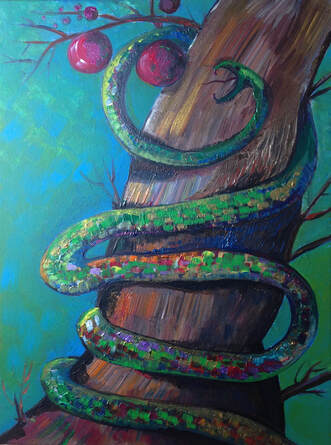vanity galleryA vanity gallery is an art gallery that charges artists fees to exhibit their work and makes most of its money from artists rather than from sales to the public. Some vanity galleries charge a lump sum to arrange an exhibition, while others ask artists to pay regular membership fees and then promise to organize an exhibition with a certain period. There is debate as to whether galleries that ask artists to contribute to expenses, e.g. by arranging for announcements of the exhibition themselves, fall into the same category. (by Wikipedia) Have you ever heard of Vanity Gallery? If you focus only on your work as an artist, you may naturally become vulnerable to responding to harmful information. Because of this particularity, artists are often at risk of being exposed to scams. Therefore, artists must also research and study continuously before doing anything and before signing a contract. With the development of the Internet, anyone can easily achieve their dreams according to their purpose if they wish. And, perhaps, investing your money and effort will give you instant fame without any professionality. It is due to the weakening of barriers to entry by diversity and commercial marketing. As a result, the person who wants to pursue with sincerity to do something can suffer under the insidious pitfall of business and marketing slot. Recently I have faced same problem. Looking back, I have been painting for nearly ten years, but I have never met a so-called vanity gallery and wasted my money before, so I can say that I am a lucky painter. Today I would like to share some of private experiences about the relationship between gallery and artist. The galleries I exhibited were not fancy, glamorous, or luxurious places for anyone to see. It was a gallery run by membered artists who created and operated a cooperative. However, the paintings here have been vetted rigorously. The gallery did not charge any fees to the artist for the exhibition. And there were many benefits that an artist could take advantage of it. For example, a cooperative gallery in Germany helped set up an exhibition for me, an emerging artist, during a local festival. So many people came to see my paintings, and my works were sold. The director was delighted with my first success. Instead, I had to create a promotional brochure myself. I had designed it in Photoshop, printed it on my home printer, and cut it overnight with sharp scissors. An exciting experience was that I made and sold postcards, which sold quite well. And I took the profits from postcards and paintings to the proportion of 80 and 20 galleries. Some galleries also did not charge for the exhibition and gave me money for the performance after the show oppositely. Maybe I didn't have enough money, and once the some vanity gallery asked for money, I couldn't answer it as their needs. With the financial motivation, more fiercely, I searched for exhibition spaces that were provided for artists for free. When the exhibition was held at a local cafe, it was quite good because it was a win-win strategies. The local gallery with cafe was a famous place for artists, the exhibition record remained on the Internet for a long time. They judged all paintings and curated by own professional staff. When I came to the United States, a commercial gallery director rented a space for free (2 weeks) after looking at my work. At this time, I also made a promotional poster in Photoshop, printed it, because the gallery can't do it. Since it was a gallery in a tourist area, many people visited, and paintings were also sold. The owner himself hung and nailed the pictures for my exhibition and actively promoted my images. When my work was sold, I divided our portions 50/50 by my voluntary decision to repay for his efforts. Since then, I have joined a local art councils to exhibit and sell works mainly. However, after experiencing an artist open call, I noticed something suspicious. Since open Internet calls are not person-to-person, it is challenging to respond with detecting by instinct. So it is an area that needs further research. I'll do more research on this and keep posting. When submitting work through an open call, you must check whether the institution is reliable. Also, I am often in a situation where it is ambiguous whether this is vanity or not. The standard is the expenses. In other words, from experience, there are many opportunities to expose my work without spending overpayment. It seems that something that looks flashy to see and hear must be verified first to avoid being deceived. In that regard, I modified the career section of my homepage. I plan to update again after confirming the parts that need verification. The path of an artist is not only a path to painting but also an arduous side. You have to protect yourself, and you have to plow through the rough sea like a ship breaking through the waves. There are many temptations and shortcuts, but you have to close your eyes in front of the sweat calling. Sometimes I get deceived and upset, but I have to shake it off and get up again. Still, I have to go this route again. If you are an artist who has a hard time making a living, this process can be even more arduous. In the future, I plan to study how to protect myself as an artist and show and evaluate my work more authentically. Reference : https://fineartviews.com/blog/33648/vanity-gallery-art-scam-or-art-opportunity Comments are closed.
|
Myungja Anna KohArtist Categories
All
Archives
July 2024
|
Proudly powered by Weebly


 RSS Feed
RSS Feed